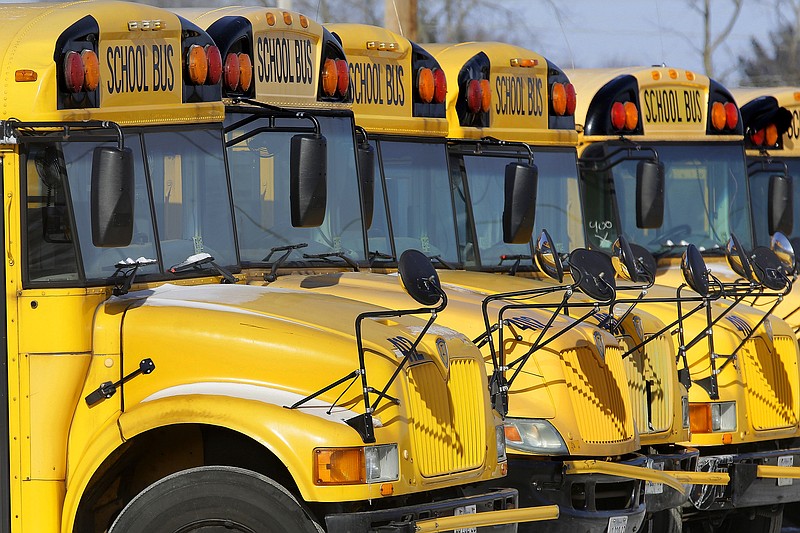Clear plastic bottles of drinking water are on the verge of becoming standard equipment for students and teachers in the Little Rock School District.
The Community Advisory Board for the state-controlled capital city district has recommended to Arkansas Education Secretary Johnny Key final approval a draft policy that will allow students and staff members to carry -- and use -- clear water bottles while on campus -- as long as certain conditions are met.
Dave Oberembt, government relations director for the Arkansas chapter of the American Heart Association, welcomed the school district's draft policy, saying that if approved it will be the first formally adopted policy of its kind in the nation. And, as such, it will be a national model.
"It's a new priority for the American Heart Association across the country," Oberembt said recently about promoting water as a classroom beverage. "Water access and consumption results in children living healthier lives and promotes sugar-beverage reduction, as well as better cognitive abilities and better schoolwork," he said.
"Colleagues across the country are asking for a copy of the policy draft," he also said.
The draft policy states that water is necessary to maintain and improve health, and so students and staff members can carry the clear bottles while on campus -- with the following caveats:
• Bottles must be capped with either a push-button or slide-lid or an automatic seal spout.
• A screw-on lid or push-top lid is not sufficient.
• No juice, soda, addable, or energy drink in the bottle -- only plain water.
• Water may be consumed during class but not in close proximity to technology equipment, during science labs, or in the library.
• Classroom rules regarding the use of the restroom will be in effect. Students and staff members need to take care of restroom needs before class starts and one must be responsible for the amount of water that is taken in during classroom time.
• Students and staff members will be responsible to fill bottles between classes. A student cannot leave class to fill a bottle.
• Water bottles are not to be played with on school grounds. No throwing of the bottle or pouring the contents on a student, staff member or equipment.
"Any failure to follow the policy will result in at a minimum of the student losing the opportunity of having a water bottle for a set period of time and additional repercussions, if needed," the draft policy states.
Anthony Hampton, a member of the Community Advisory Board that is recommending the draft policy to Key, said he supported the policy but also said he was concerned about the policy resulting in students getting in trouble for having to leave class for the restrooms.
"I'm aware of parents who tell their children that if they need to go to the restroom and the teacher won't allow it, they are still to go," Hampton said.
"I think somewhere or another, in student policies and teacher personnel policies, we have to be able to address that -- more than just saying the 'classroom rules will be in effect,'" he said. "Writing students up, suspending them and doing all those doing those different things -- most of our students have small bladders. Drinking water all day may not be the best. I do hope that will be taken into consideration."
Jeff Wood, chairman of the seven-member advisory board, questioned what the costs will be for the policy.
Superintendent Mike Poore said there could be costs -- particularly related to equipping new or renovated school buildings with bottle filling stations.
"We've been doing that already, so we feel it is in line," Poore said. "It is an expense and I don't want to underplay that."
But Poore doesn't expect the water bottles themselves to be an expense for the district as it would not be purchasing them, he said.
The section of the draft policy on the water filling stations calls for a minimum of two water filling stations in each school.
The draft also requires:
• A minimum of one drinking fountain or bottle filling station on each floor and wing of each new school building.
• A floor plan is strongly encouraged to have one drinking fountain or bottle filling station in or near gymnasiums, cafeterias and other high traffic areas.
• A minimum of one drinking fountain or filling station for every 100 students projected to attend the school upon completion of construction.
Metro on 12/01/2019

